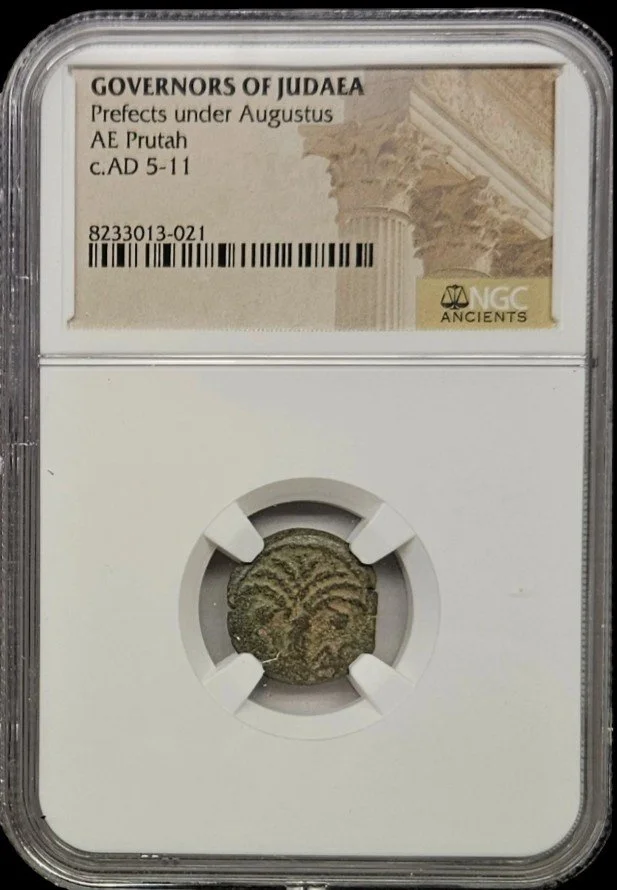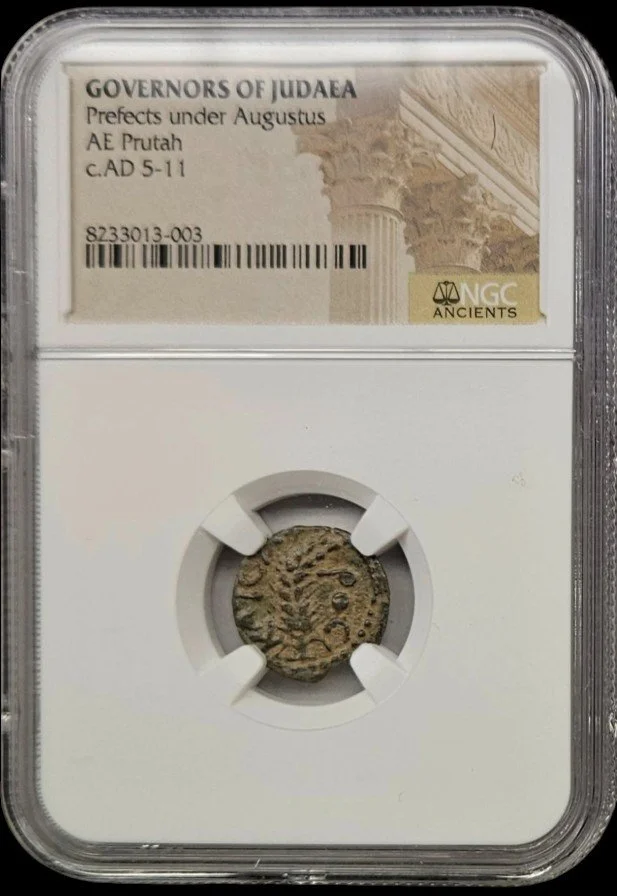 Image 1 of 2
Image 1 of 2

 Image 2 of 2
Image 2 of 2



Judaea, Under Augustus — AE Prutah of the Prefects (c. AD 5–11), High Grade (c. 2,010 years old)
The coins shown are representative examples of the grade and type, but not the actual specimens for sale. For details on NGC’s grading standards and definitions, please refer to our NGC Grading page.
Judaea, Under Augustus — AE Prutah of the Prefects (c. AD 5–11)
Struck in Jerusalem under the authority of the Roman prefects Coponius or Marcus Ambibulus, during the reign of Augustus (27 BC – AD 14). These small bronze prutot mark the earliest period of direct Roman rule in Judaea following the deposition of Herod Archelaus in AD 6.
Obverse: Ear of barley, symbol of agricultural prosperity in the region.
Reverse: Palm tree branch (lulav) within wreath, or similar Judaean symbol, depending on die variety.
Size/Weight: Typically around 13–16 mm, ~2 g.
These prutot are historically important as they represent Rome’s earliest coinage issued in Judaea after it became a Roman province. Struck locally but under imperial oversight, they bear no portrait — a concession to Jewish religious sensitivities against graven images.
Well-centered and evenly patinated, this example provides an excellent link to both the Augustan age of Rome and the early years of Judaea as a Roman province, making it a desirable type for both Judaean and Roman provincial collections.
The coins shown are representative examples of the grade and type, but not the actual specimens for sale. For details on NGC’s grading standards and definitions, please refer to our NGC Grading page.
Judaea, Under Augustus — AE Prutah of the Prefects (c. AD 5–11)
Struck in Jerusalem under the authority of the Roman prefects Coponius or Marcus Ambibulus, during the reign of Augustus (27 BC – AD 14). These small bronze prutot mark the earliest period of direct Roman rule in Judaea following the deposition of Herod Archelaus in AD 6.
Obverse: Ear of barley, symbol of agricultural prosperity in the region.
Reverse: Palm tree branch (lulav) within wreath, or similar Judaean symbol, depending on die variety.
Size/Weight: Typically around 13–16 mm, ~2 g.
These prutot are historically important as they represent Rome’s earliest coinage issued in Judaea after it became a Roman province. Struck locally but under imperial oversight, they bear no portrait — a concession to Jewish religious sensitivities against graven images.
Well-centered and evenly patinated, this example provides an excellent link to both the Augustan age of Rome and the early years of Judaea as a Roman province, making it a desirable type for both Judaean and Roman provincial collections.





















